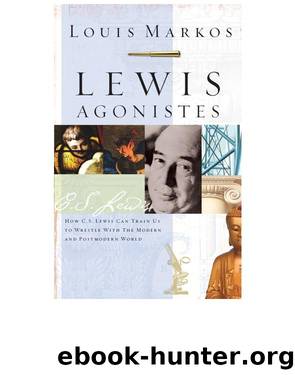Lewis Agonistes by Louis Markos

Author:Louis Markos
Language: eng
Format: epub
Publisher: B&H Publishing Group
Published: 2010-01-28T00:00:00+00:00
If the space trilogy carries the medieval model up into the heavens, then the Chronicles of Narnia bring it back to the earth. Lewis's concern in the latter series is not so much to contemplate the influence of the spheres or to uncover hidden angelic forces as it is to create a magical world in which nature is still alive and in sympathy with man. The fauns and dryads and talking horses that populate Narnia and its surrounding countries are more than just testaments to Lewis's wide reading in the annals of ancient myth and legendâthey mark, as well, an attempt by Lewis to revive in his readers a sense of awe and wonder at the numinous presences that dwell all around us. What the reader often remembers about the Chronicles long after the plot details have faded is the intense vitality of Narnia; everything in that wondrous land seems to shimmer with life. Indeed, though the land of Narnia has been fervently embraced by orthodox Christians, it is much closer in conception to the kind of world the New Ager yearns to inhabit.
Aslan is, of course, an allegory for (or, better, a type of) Christ. Indeed, he is Christ in another form and by another name, as he intimates to the children on the final page of The Voyage of the Dawn Treader, but he is also the embodiment of Spring. In chapter 8 of The Lion, the Witch and the Wardrobe, Mr. Beaver shares the following prophetic poem with the children:
Wrong will be right, when Aslan comes in sight,
At the sound of his roar, sorrows will be no more,
When he bares his teeth, winter meets its death
And when he shakes his mane, we shall have spring again.
As we have already seen, Lewis firmly believed that in the person of Jesus Christ, both the prophecies of the Jews and the myths of the Greeks found their perfect and historical fulfillment. In constructing the character of Aslan, Lewis combined elements from both the Gospel narratives and the ancient pagan mysteries, particularly those celebrated at Eleusis. The salvation that Aslan effects in The Lion, the Witch and the Wardrobe is not just theological but natural. He ransoms both Edmund and Narnia from the White Witch, but he also brings fertility back to the land. This sympathetic relationship between the divine and the natural is, as we saw above, a vital aspect of the medieval model, as it is of the New Age, and, in the Chronicles, Lewis helps revive in his readers a sense both of the connectedness of all things and of the sacredness of the natural and the physical.
Lewis knew well the dangers that come with excessive Puritanism: denigration of the flesh, suspicion of the arts, and an abstract spirituality divorced from nature and from ritual. In the medieval Catholic world of Narnia, such things more naturally attach themselves to the White Witch, who hates all forms of revelry and of natural life. During the tyrannical reign of the
Download
This site does not store any files on its server. We only index and link to content provided by other sites. Please contact the content providers to delete copyright contents if any and email us, we'll remove relevant links or contents immediately.
The Lost Art of Listening by Michael P. Nichols(7163)
Why I Am Not A Calvinist by Dr. Peter S. Ruckman(4045)
The Rosicrucians by Christopher McIntosh(3371)
Wicca: a guide for the solitary practitioner by Scott Cunningham(3043)
Signature in the Cell: DNA and the Evidence for Intelligent Design by Stephen C. Meyer(2878)
Real Sex by Lauren F. Winner(2864)
The Holy Spirit by Billy Graham(2775)
To Light a Sacred Flame by Silver RavenWolf(2674)
The End of Faith by Sam Harris(2632)
The Gnostic Gospels by Pagels Elaine(2397)
Waking Up by Sam Harris(2330)
Nine Parts of Desire by Geraldine Brooks(2280)
Jesus by Paul Johnson(2226)
Devil, The by Almond Philip C(2204)
The God delusion by Richard Dawkins(2187)
Heavens on Earth by Michael Shermer(2187)
Kundalini by Gopi Krishna(2092)
Chosen by God by R. C. Sproul(2054)
The Nature of Consciousness by Rupert Spira(1980)
